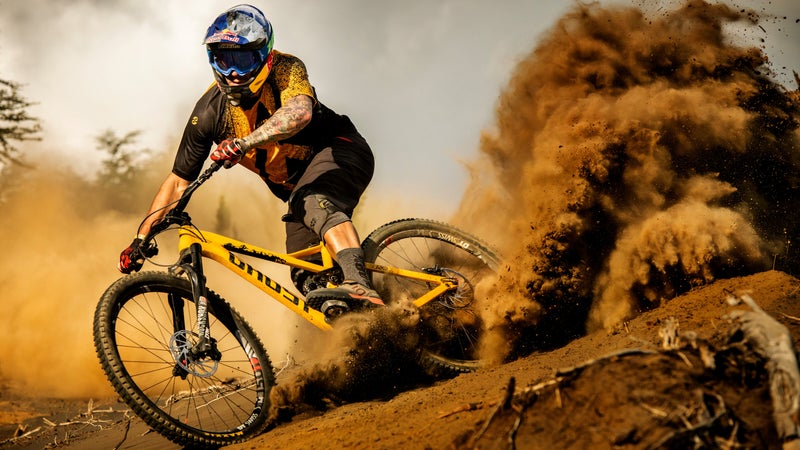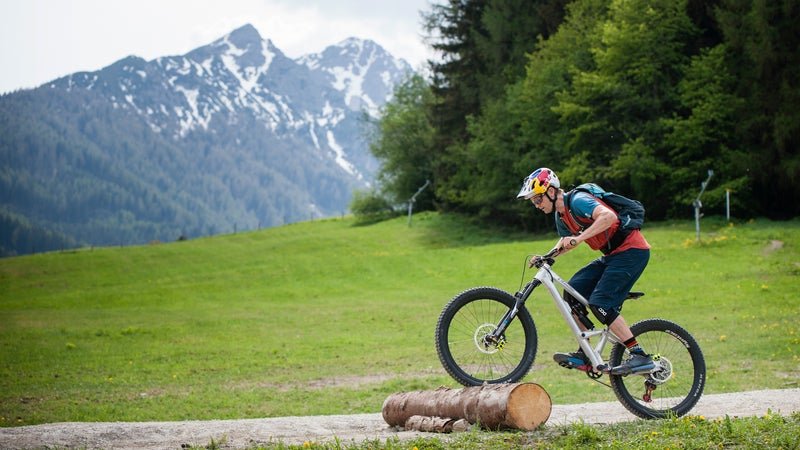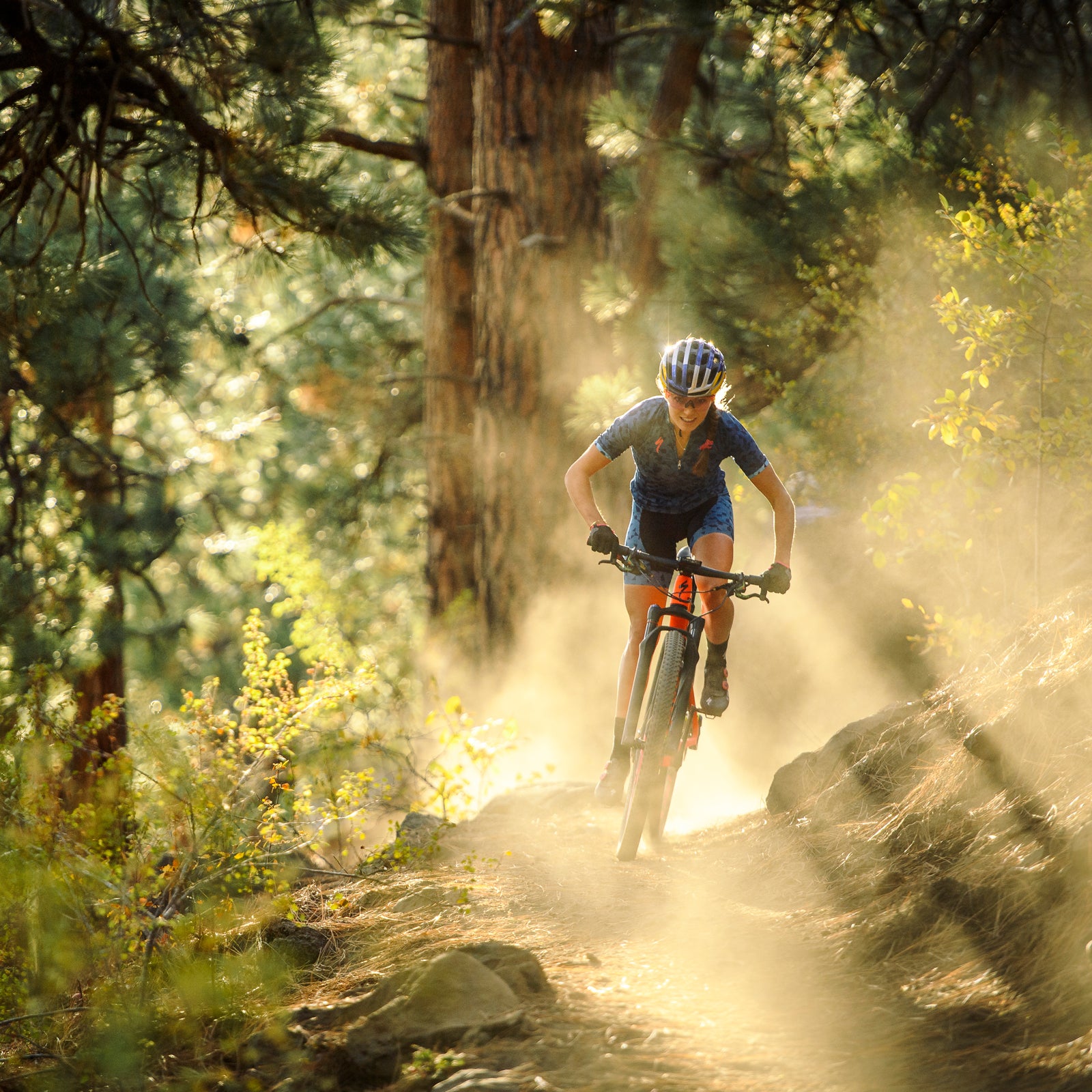Getting dialed on a mountain bike requires a combination of fitness and bike-handling skills. Unlike road riding, where most of a ride is spent in the aerobic zone, mountain biking requires frequent bursts into the red. тАЬMost mountain-bike trails are on varied terrain,тАЭ says , USA CyclingтАЩs╠¤performance director for mountain biking. тАЬYou have steep climbs or technical features that require you to put power into the pedals.тАЭ ItтАЩs also a discipline where strong technical skills can save a ton of energy. The strongest rider is not necessarily the fittest╠¤but the one who combines a solid endurance base with the technical skills that translate to more efficient riding.
We asked Gullickson and , skills coach for the USA Cycling and Olympic mountain-bike teams, to share some tips for beginners that will make you a strong, fast rider.
Build a Base╠¤
Before working on speed or intensity, itтАЩs important to develop╠¤a basic level of fitness and endurance. тАЬIt builds the body up and allows you to handle higher-intensity workouts,тАЭ says Gullickson. If youтАЩre coming off the couch, aim to spend four to six weeks in base-building modeтАФfrequent, consistent, low-intensity effortтАФbefore adding speed and intensity. Ride three or four times a week for one to two hours at a time. The key here is restraint: тАЬIf you feel good, get longer rides in, but donтАЩt go so hard that you canтАЩt repeat the effort in a couple of days,тАЭ he says. Make sure youтАЩre fueling your rides with high-quality food: fresh veggies and fruits, whole grains, and minimally processed foods. тАЬItтАЩs also important to hydrate with an electrolyte drink during the ride,тАЭ Gullickson says. тАЬIf the ride is longer than an hour, bring a gel,╠¤Bloks, or energy bar to supplement the hydration.тАЭ
Add Intervals╠¤
After about four weeks of base building (followed by one dialed-back recovery week), incorporate intervals on one or two rides a week. During the first two weeks, intervals might look like this: ride for 30 minutes to warm up, then add five-second intervals of intense effort followed by 10 or 20 seconds of rest. Do five reps followed by a longer break. In later weeks, work up to : 20 seconds of all-out effort followed by ten╠¤seconds of rest. Shoot for eight reps. In lieu of timed intervals, you can borrow the runnerтАЩs concept of ,╠¤using power lines, trees, or other landmarks as visual goals for short, intense efforts. After two or three weeks, swap one short-interval workout for longer : five-to-ten-minute efforts at a pace that you can hold for up to 20 minutes.╠¤тАЬNot so hard that you canтАЩt maintain the pace,тАЭ╠¤Gullickson says.
Burn Through Turns

No matter what level of rider you are, cornering is a skill you can never stop improving. тАЬItтАЩs the number-one╠¤place where riders kill their speed,тАЭ says March. тАЬYou can use less energy by holding your momentum through the turns.тАЭ Set up early, in a wide, crouched stance on equally weighted pedals, opening the knees so the bike can lean beneath you. Important: make sure to lean the bike, not your body. тАЬWhen you lean the bike, youтАЩre able to get those side knobs on your tires to grab traction and hold the edge,тАЭ March says. тАЬItтАЩs like carving on skis.тАЭ Braking in the turn can cause skidding, so try to brake before the turn, easing off the brakes as you carve. Make sure youтАЩre looking through to the exit, turning your body. тАЬImagine your belly button is a laser, and point it toward the exit,тАЭ he says.
Float Over Rocks and Roots
Many obstacles in the trailтАФroots, rocks, and bumpsтАФare small enough to ride over with good form and a little momentum. Standing on equally weighted pedals, with elbows out and a nice bend in your knees and ankles, approach the obstacle at jogging speed. Keep your eyes focused as far down the trail as possible (donтАЩt look down), using your peripheral vision to hold your line. Avoid leaning on the handlebars, which weights your front wheel and could cause it to snag. тАЬHeavy feet, light hands,тАЭ is a good mantra, March says. Think of your arms and legs as shock absorbers as you ride over the obstacle.
Master the Basic Front-Wheel Lift

For midsize╠¤obstacles (like a log, or anything hub height or lower) on level or downhill slopes, use the basic front-wheel lift. тАЬItтАЩs a three-part move,тАЭ March says. тАЬLoad. Explode. Lift.тАЭ Approach the obstacle in a тАЬreadyтАЭ position: standing on equally weighted pedals, looking ahead, elbows and knees actively bent.
Step 1: Load
Compress your front shock by loading╠¤the handlebars with your upper body, aggressively bending your elbows.
Step 2: Explode
As the shock rebounds, straighten your arms explosively. (It should feel kind of like a clapping push-up.)
Step 3: Lift
As your front wheel leaves the ground, bend your arms and lift the handlebars, raising the wheel even higher. The timing of this move is essential and depends on the speed at which youтАЩre approaching the obstacle. Once the front wheel is over, the rear wheelтАФunweightedтАФwill follow. This a perfect move to practice on curbs in the parking lot while youтАЩre waiting around for that riding buddy whoтАЩs always running late.
Crush Uphill Obstacles
Getting over uphill obstacles can be exhausting unless you use an energy-saving technique: the pedaling front-wheel lift. Use it when youтАЩre seated and climbing and need to get over an uphill rock or root. тАЬStart with your dominant foot at the top of the pedal strokeтАФone oтАЩclockтАФand give the pedal a hard punch to six oтАЩclock,тАЭ March says. At the same time, lean back with your shoulders, straightening your arms, and feel your front wheel rise. тАЬYouтАЩre not pulling up on your hands so much,тАЭ March says. тАЬThe power from the pedals is whatтАЩs bringing the bike up.тАЭ As soon as your front wheel clears the obstacle and lands, stand on the pedals in a crouched position, with bent arms. Give the handlebars a forceful shove, lunging the rear wheel over the obstacle. This method works best in an easy-to-moderate gear.
Rest Hard
Recovery is just as important as trainingтАФitтАЩs when your body rebuilds itself.╠¤This starts the second you get off the bike: тАЬMake sure to take in a recovery drink mix or healthy snack within 20 minutes of completing the ride, to jump-start recovery,тАЭ Gullickson says. тАЬA lot of our riders use protein mix with almond milk, but any mix of protein and carbohydrate is fine.тАЭ Incorporate easy, unstructured rides between longer rides and shorter, higher-intensity rides. тАЬIt flushes blood through fatigued muscles and can speed up recovery,тАЭ Gullickson says. тАЬPsychologically, itтАЩs nice to get on your bike and know youтАЩre not going out to suffer.тАЭ He recommends one or two days completely off the bike per week. тАЬMaybe one of those days is a cross-training day, just to mix it up.тАЭ


